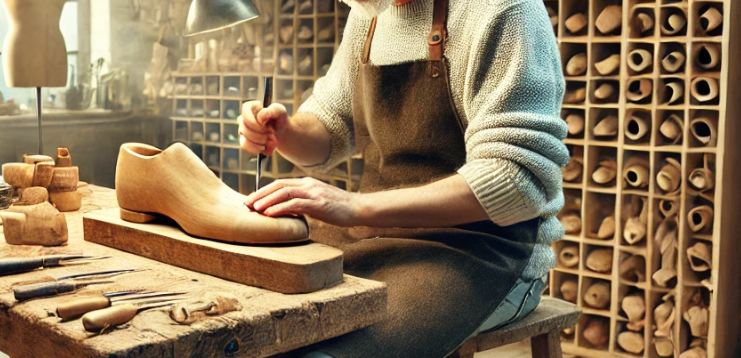
The Art of Lasting in Bespoke Shoemaking: A Detailed Exploration
Bespoke shoemaking is a revered craft that combines precision, artistry, and a deep understanding of materials and techniques. Among the many stages involved in crafting a pair of bespoke shoes, the process of lasting holds a place of paramount importance. Lasting shapes the shoe, giving it its final form and ensuring it fits the wearer's foot perfectly. This blog post will delve into the intricate process of lasting in bespoke shoemaking, exploring each step in detail and highlighting the skills and artistry involved.
Understanding Bespoke Shoemaking
Bespoke shoemaking is the pinnacle of shoe craftsmanship. It involves creating custom-made shoes tailored to an individual's specific measurements, preferences, and requirements. The shoemaker then creates a last—a three-dimensional model of the client's foot—that serves as the foundation for building the shoe. The upper part of the shoe is crafted from the finest materials and meticulously stitched together. The process of lasting then follows, where the upper is shaped over the last, giving the shoe its final form.
The Importance of Lasting in Shoemaking
The lasting process is crucial because it transforms the flat, two-dimensional upper into a three-dimensional shoe that conforms to the shape of the foot. This step not only determines the fit and comfort of the shoe but also its aesthetic appeal and structural integrity. A well-executed lasting process ensures that the shoe fits snugly, supports the foot, and maintains its shape over time.
Step-by-Step Process of Lasting
-
Preparation of the Last:
- The first step in the lasting process is the preparation of the last. The last is typically made from wood or plastic and is custom-made to match the exact measurements and contours of the client's foot.
- The last is designed to accommodate the specific design and style of the shoe. For instance, a dress shoe last will have a different shape and profile compared to a casual or athletic shoe last.
- The shoemaker may add or remove material from the last to achieve the desired shape and fit. This step is critical to ensure that the final shoe will be comfortable and supportive.
-
Cutting and Preparing the Upper:
- Once the last is ready, the next step is to cut and prepare the upper part of the shoe. The upper is made from high-quality leather or other materials, chosen based on the design and function of the shoe.
- The shoemaker carefully cuts the leather pieces according to the pattern, ensuring precision and accuracy. The edges of the leather pieces are then skived (thinned) to create smooth and seamless seams.
- The pieces of the upper are stitched together using strong, durable threads. The stitching can be done by hand or with a sewing machine, depending on the design and the shoemaker's preference.
-
Moistening the Leather:
- Before the lasting process begins, the leather upper is moistened to make it more pliable and easier to shape. This step is crucial to ensure that the leather can be stretched and molded without cracking or tearing.
- The shoemaker uses a sponge or cloth to dampen the leather, taking care not to soak it too much. The goal is to make the leather supple and flexible, allowing it to conform to the shape of the last.
-
Positioning the Upper on the Last:
- With the leather upper prepared and moistened, the shoemaker positions it over the last. This step requires precision and skill to ensure that the upper is aligned correctly and fits snugly over the last.
- The shoemaker starts by securing the toe of the upper to the last using tacks or nails. This step ensures that the upper is anchored in place and prevents it from shifting during the lasting process.
- The shoemaker then stretches the leather over the last, working from the toe towards the heel. The leather is pulled tight to remove any wrinkles or creases, ensuring a smooth and even fit.
-
Pulling and Stretching the Leather:
- The next step in the lasting process is to pull and stretch the leather upper over the last. This step is critical to shaping the shoe and ensuring a snug and comfortable fit.
- The shoemaker uses lasting pliers and other specialized tools to grip and stretch the leather. The leather is pulled tight and secured to the last with tacks or nails, starting from the toe and working towards the heel.
- The shoemaker takes care to evenly distribute the tension, ensuring that the leather is stretched uniformly without causing any distortion or damage. This step requires a keen eye and a steady hand to achieve the desired shape and fit.
-
Securing the Upper to the Last:
- Once the leather upper is stretched and positioned correctly, it is secured to the last with tacks or nails. The shoemaker works methodically, starting from the toe and moving towards the heel, ensuring that the upper is tightly and evenly secured.
- The tacks or nails are driven into the insole, which is attached to the bottom of the last. This step ensures that the upper is held firmly in place, maintaining the shape and structure of the shoe.
- Any excess leather is trimmed away, and the edges are smoothed to create a neat and clean finish. The shoemaker may also reinforce certain areas, such as the toe and heel, to provide additional support and durability.
-
Drying and Setting the Leather:
- After the upper is secured to the last, the shoe is left to dry and set. This step allows the leather to conform to the shape of the last and retain its form.
- Once the leather is fully dried and set, the tacks or nails are carefully removed. The shoe is now ready for the next stage of construction, which may include attaching the sole, adding linings, and finishing touches.
-
Final Adjustments and Inspection:
- Before proceeding to the final stages of shoemaking, the shoemaker conducts a thorough inspection of the lasted shoe. This step involves checking the fit, alignment, and overall quality of the shoe.
- Any necessary adjustments are made to ensure that the shoe meets the highest standards of craftsmanship. This may involve refining the shape, smoothing edges, and making minor corrections to the fit.
- The shoemaker also ensures that the upper is free from any wrinkles, creases, or imperfections. This step is crucial to achieving a flawless and professional finish.
The Role of Skill and Experience in Lasting
The process of lasting is both an art and a science, requiring a combination of technical skill, experience, and artistic sensibility. The shoemaker must have a deep understanding of materials, anatomy, and construction techniques to achieve the perfect fit and finish.
The skill and experience of the shoemaker are evident in every step of the lasting process. From the careful preparation of the last to the precise positioning and stretching of the upper, each action requires a keen eye for detail and a steady hand. The shoemaker must balance functionality and aesthetics, ensuring that the shoe not only fits comfortably but also looks elegant and refined.
Traditional vs. Modern Lasting Techniques
The techniques used in lasting have evolved over centuries, influenced by advancements in technology and changes in fashion. Traditional methods of lasting, such as hand-lasting, have been practiced for generations and are still revered for their precision and craftsmanship. Hand-lasting involves manually stretching and shaping the leather upper over the last using hand tools and tacks. This method allows for a high degree of control and customization, resulting in a superior fit and finish.
Modern lasting techniques, such as machine-lasting, offer increased efficiency and consistency. Machine-lasting involves using specialized machinery to stretch and shape the leather upper over the last. This method is often used in mass production, where speed and uniformity are essential. While machine-lasting can produce high-quality results, it lacks the personal touch and customization of hand-lasting.
In bespoke shoemaking, hand-lasting is often preferred for its ability to achieve a precise fit and personalized finish. The shoemaker can make minute adjustments and refinements throughout the process, ensuring that the final shoe meets the exact specifications and preferences of the client.
The Evolution of Lasts
The evolution of lasts has also played a significant role in the lasting process. Traditional lasts were made from wood and hand-carved to match the client's foot measurements. These wooden lasts were prized for their durability and ability to be customized and adjusted.
Modern lasts are often made from plastic or composite materials, offering increased flexibility and precision. These materials can be molded and shaped with greater accuracy, allowing for more precise customization. Additionally, advancements in technology have enabled the use of 3D scanning and printing to create custom lasts that perfectly match the client's foot shape.
Despite these advancements, the essence of lasting remains unchanged. It is a process that requires skill, patience, and a deep understanding of the craft. Whether using traditional wooden lasts or modern plastic lasts, the shoemaker's expertise and attention to detail are critical to achieving the perfect fit and finish.
The Significance of Lasting in Bespoke Shoemaking
The lasting process is a defining feature of bespoke shoemaking, setting it apart from mass-produced footwear. In bespoke shoemaking, every pair of shoes is unique, crafted to the exact specifications and preferences of the client. The lasting process ensures that each shoe fits perfectly, providing unparalleled comfort and support.
The significance of lasting extends beyond the technical aspects of shoemaking. It represents the dedication and artistry of the shoemaker, who invests countless hours and meticulous effort into every pair of shoes. The lasting process is a testament to the shoemaker's commitment to quality, craftsmanship, and customer satisfaction.
The Future of Lasting in Bespoke Shoemaking
As technology continues to advance, the future of lasting in bespoke shoemaking holds exciting possibilities. Innovations in materials, tools, and techniques offer new opportunities for customization and precision. However, the core principles of lasting—skill, craftsmanship, and attention to detail—will remain unchanged.
The integration of technology, such as 3D scanning and printing, can enhance the shoemaker's ability to create custom lasts and achieve a perfect fit. These advancements can streamline the lasting process, making it more efficient and accessible without compromising the quality and craftsmanship that define bespoke shoemaking.
Additionally, the growing interest in sustainability and ethical practices is influencing the shoemaking industry. Shoemakers are exploring eco-friendly materials and techniques that minimize waste and environmental impact. The lasting process can benefit from these innovations, promoting sustainable practices while maintaining the highest standards of craftsmanship.
Conclusion
The process of lasting in bespoke shoemaking is a complex and intricate art that requires a blend of technical skill, experience, and artistic sensibility. From the preparation of the last to the final inspection, each step is meticulously executed to ensure the perfect fit, function, and form of the shoe.
The lasting process transforms the flat, two-dimensional upper into a three-dimensional shoe that conforms to the shape of the foot. This step is crucial to achieving the comfort, support, and aesthetic appeal that define bespoke footwear. Whether using traditional hand-lasting techniques or modern machine-lasting methods, the shoemaker's expertise and attention to detail are paramount.
In an age of mass production and disposable fashion, bespoke shoemaking stands as a beacon of craftsmanship and tradition. The lasting process exemplifies the dedication and skill of the shoemaker, resulting in a pair of shoes that are not only a pleasure to wear but also a testament to the enduring art of shoemaking.
As we continue to appreciate and support this timeless craft, we ensure that the art of lasting, and bespoke shoemaking as a whole, continues to thrive for generations to come. Whether you are a connoisseur of fine footwear or simply someone who values quality and craftsmanship, the intricate process of lasting in bespoke shoemaking is a fascinating and inspiring journey into the heart of shoemaking artistry.
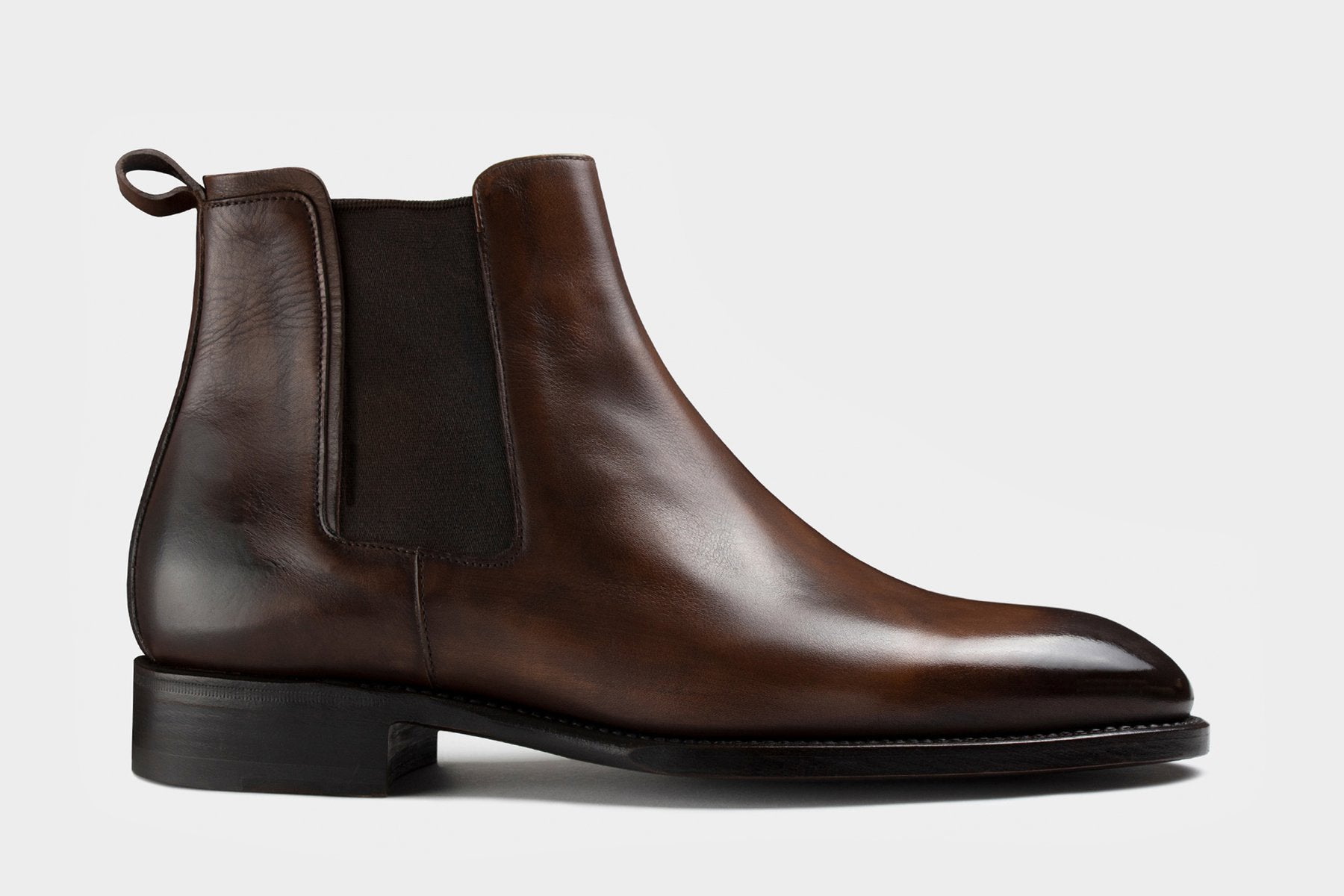
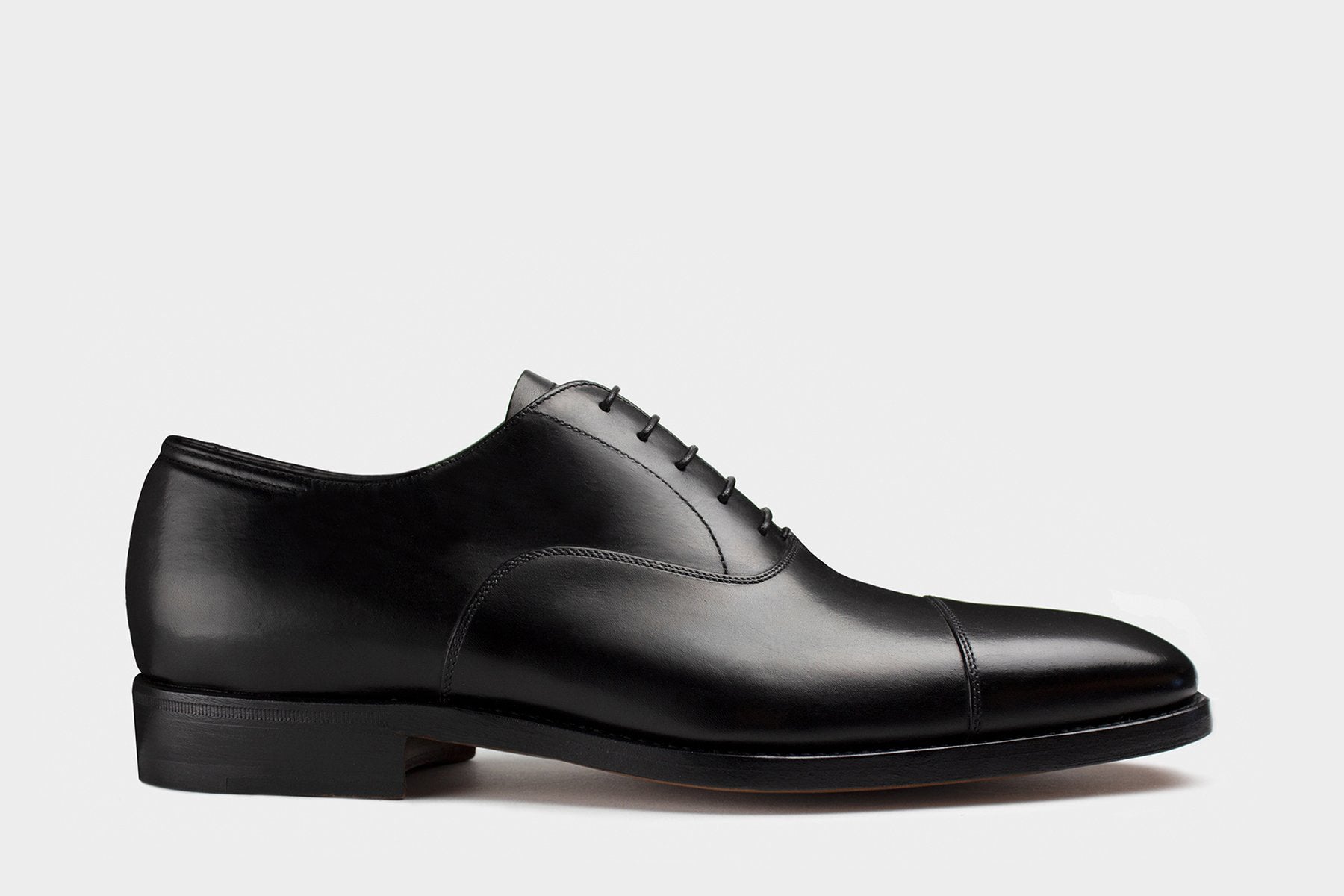
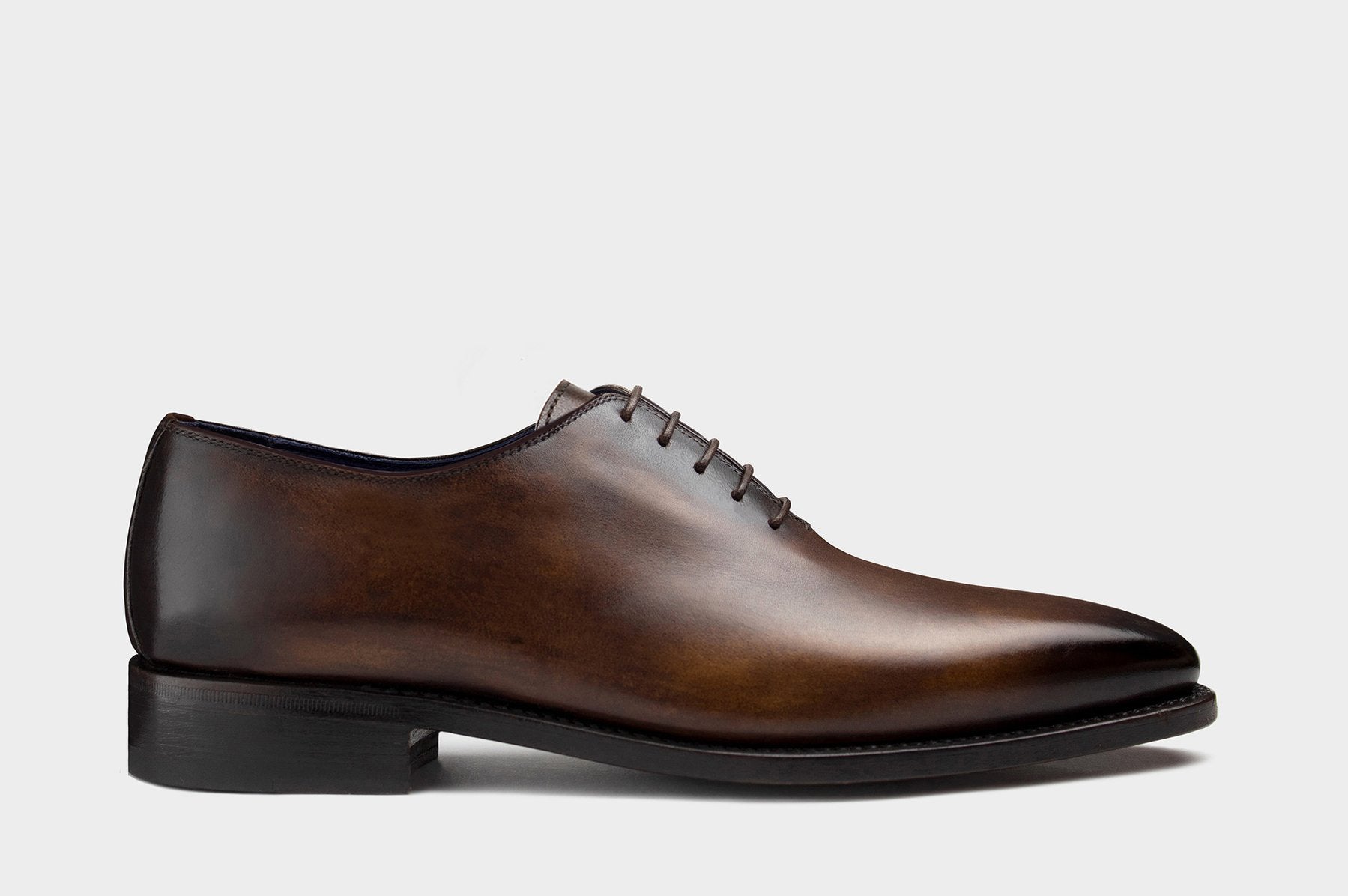
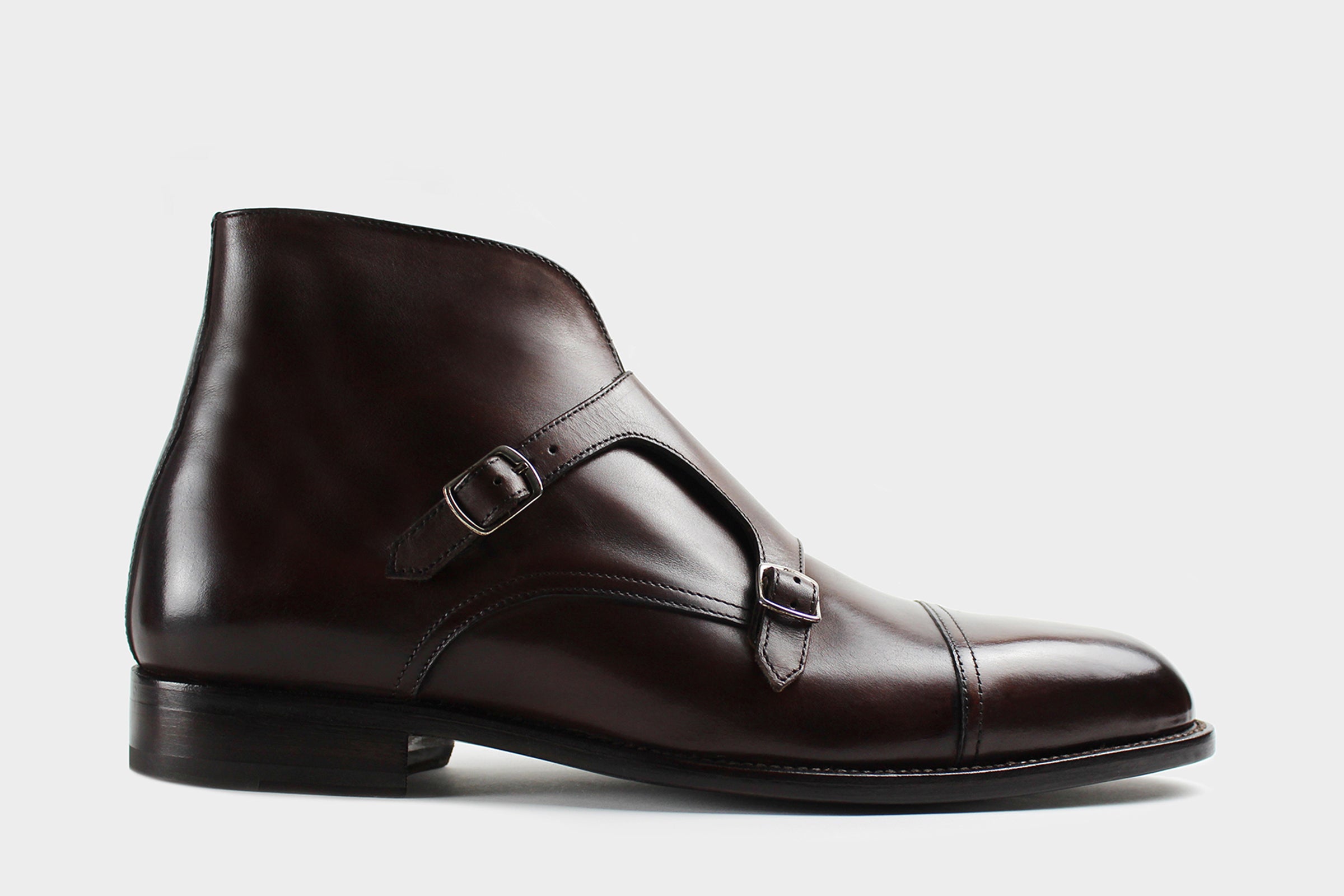
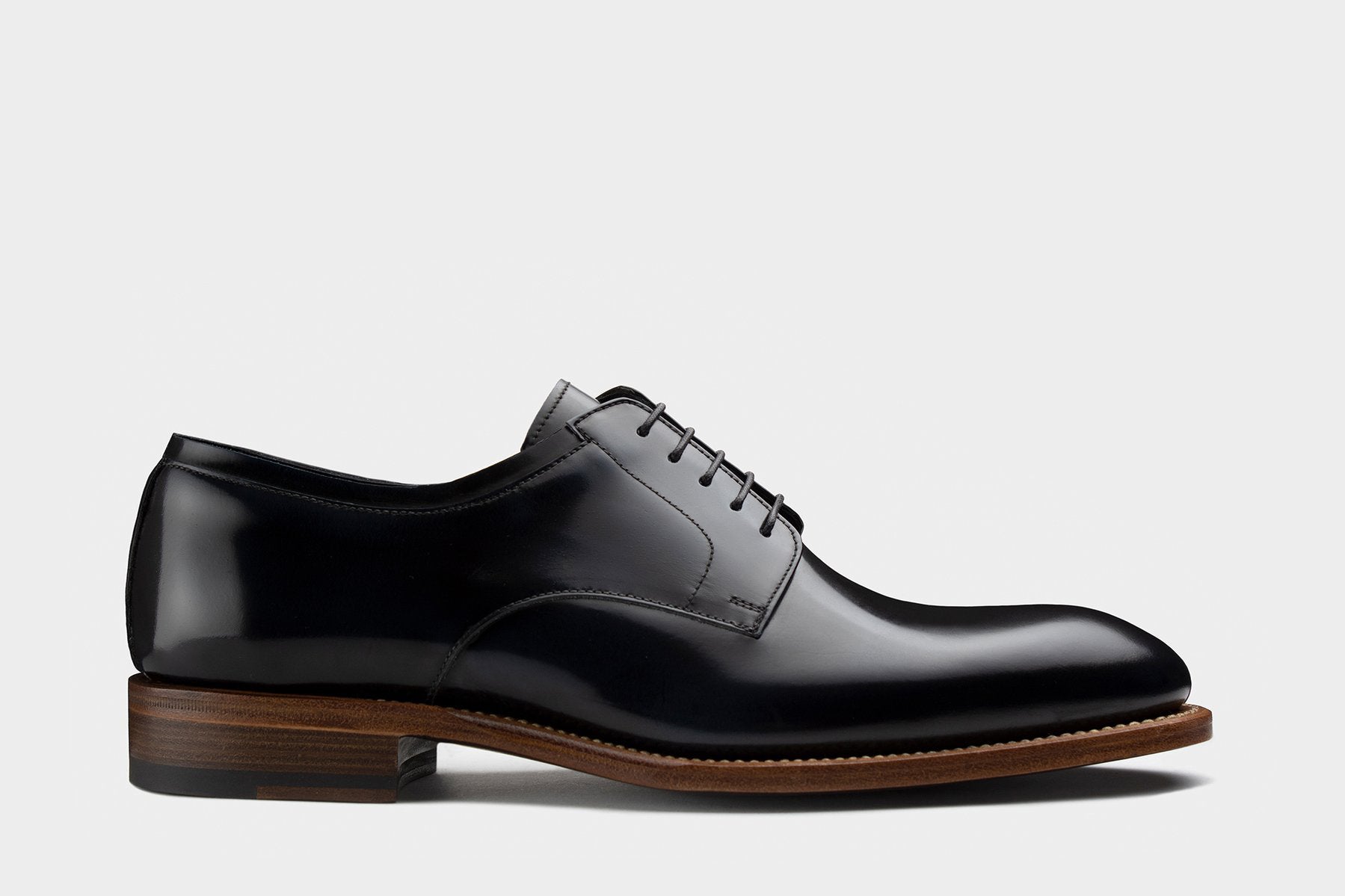
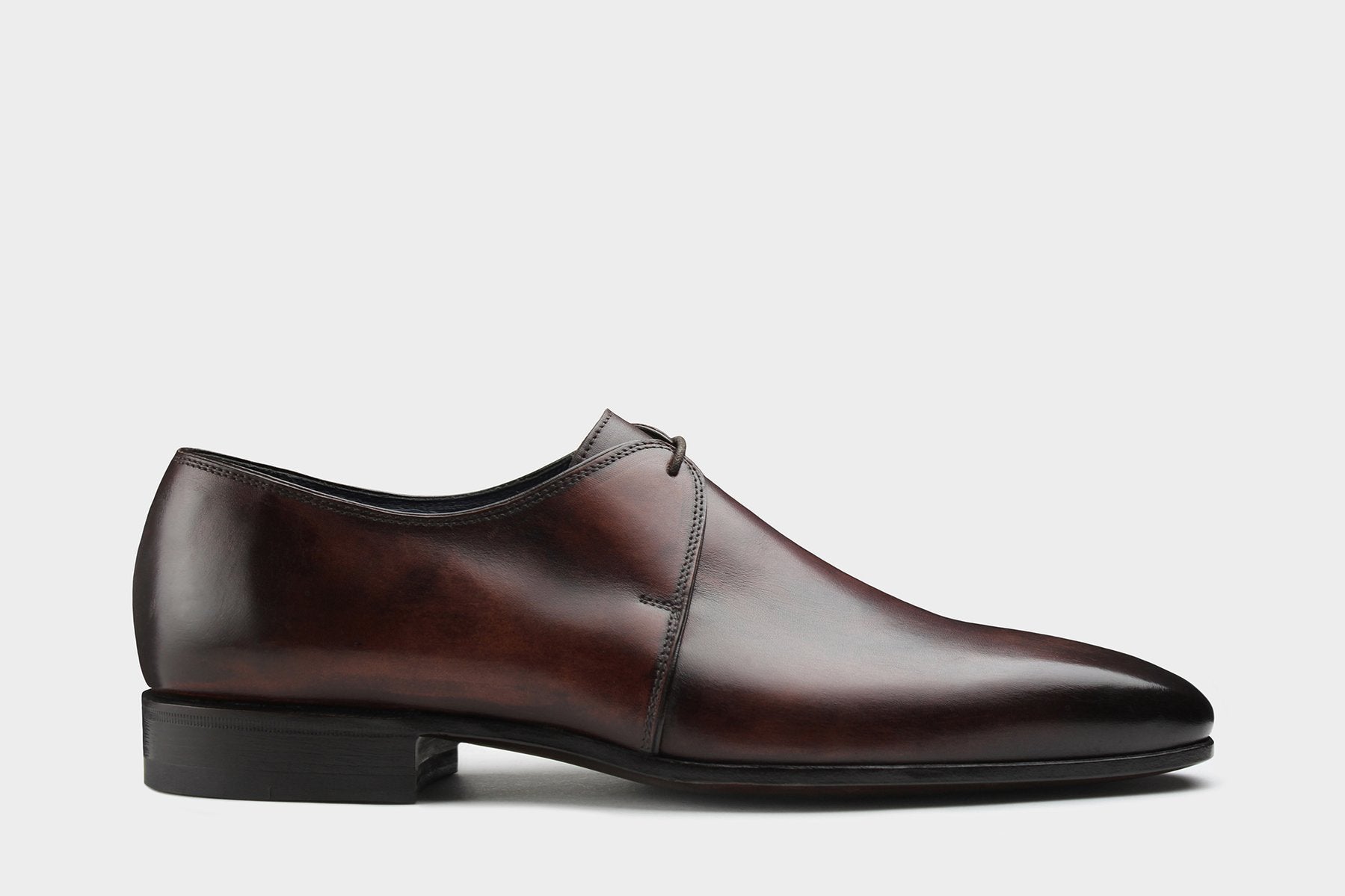
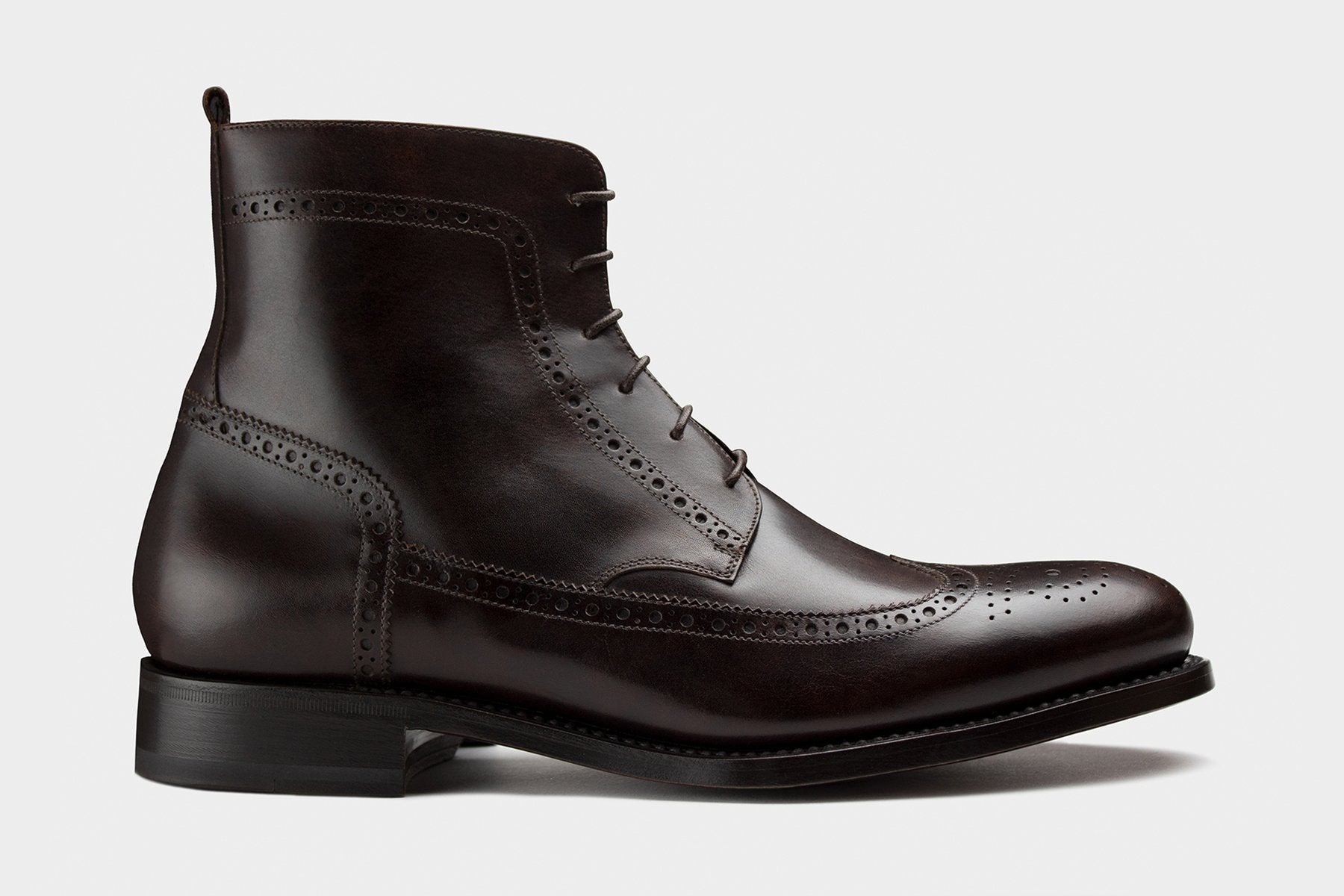
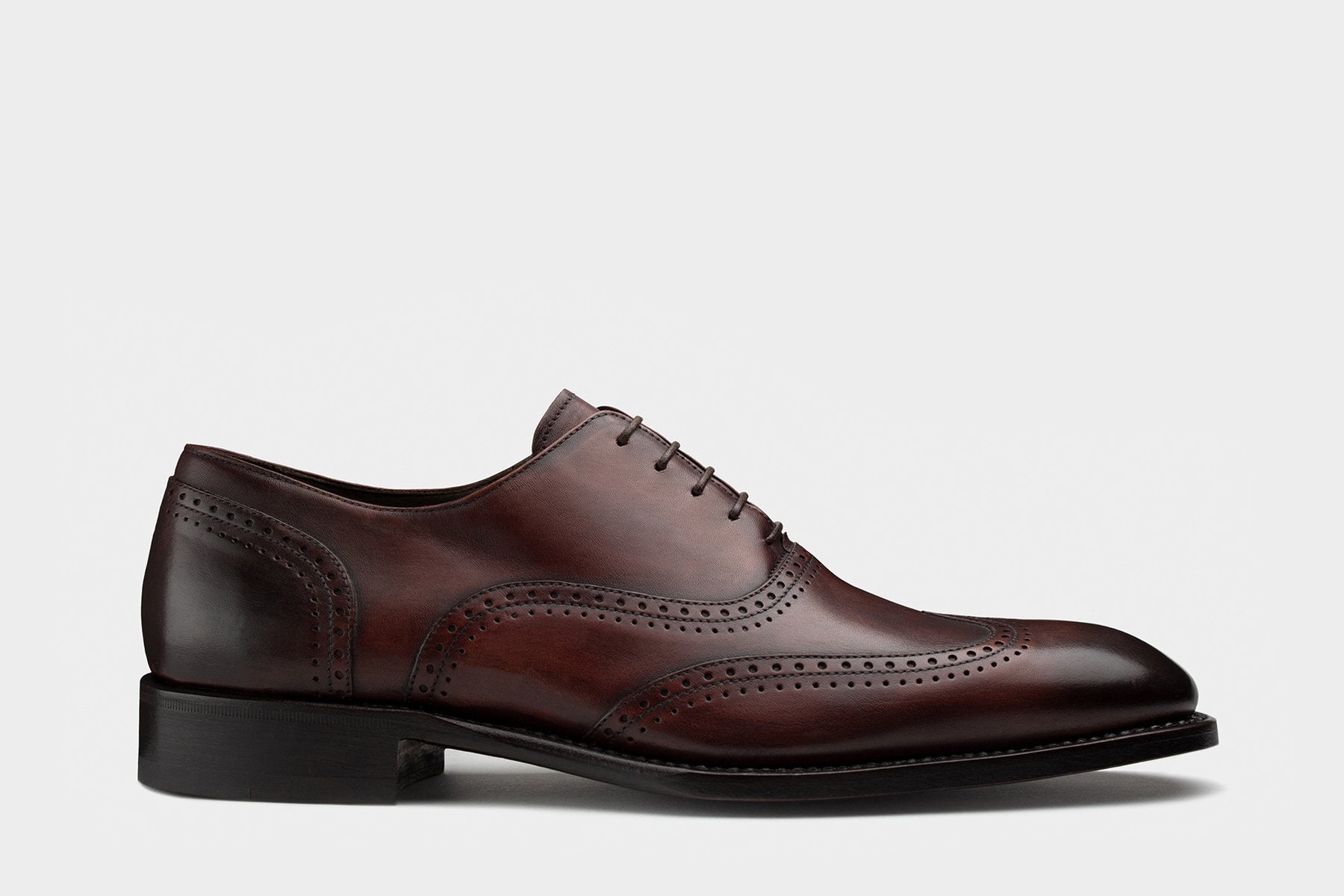
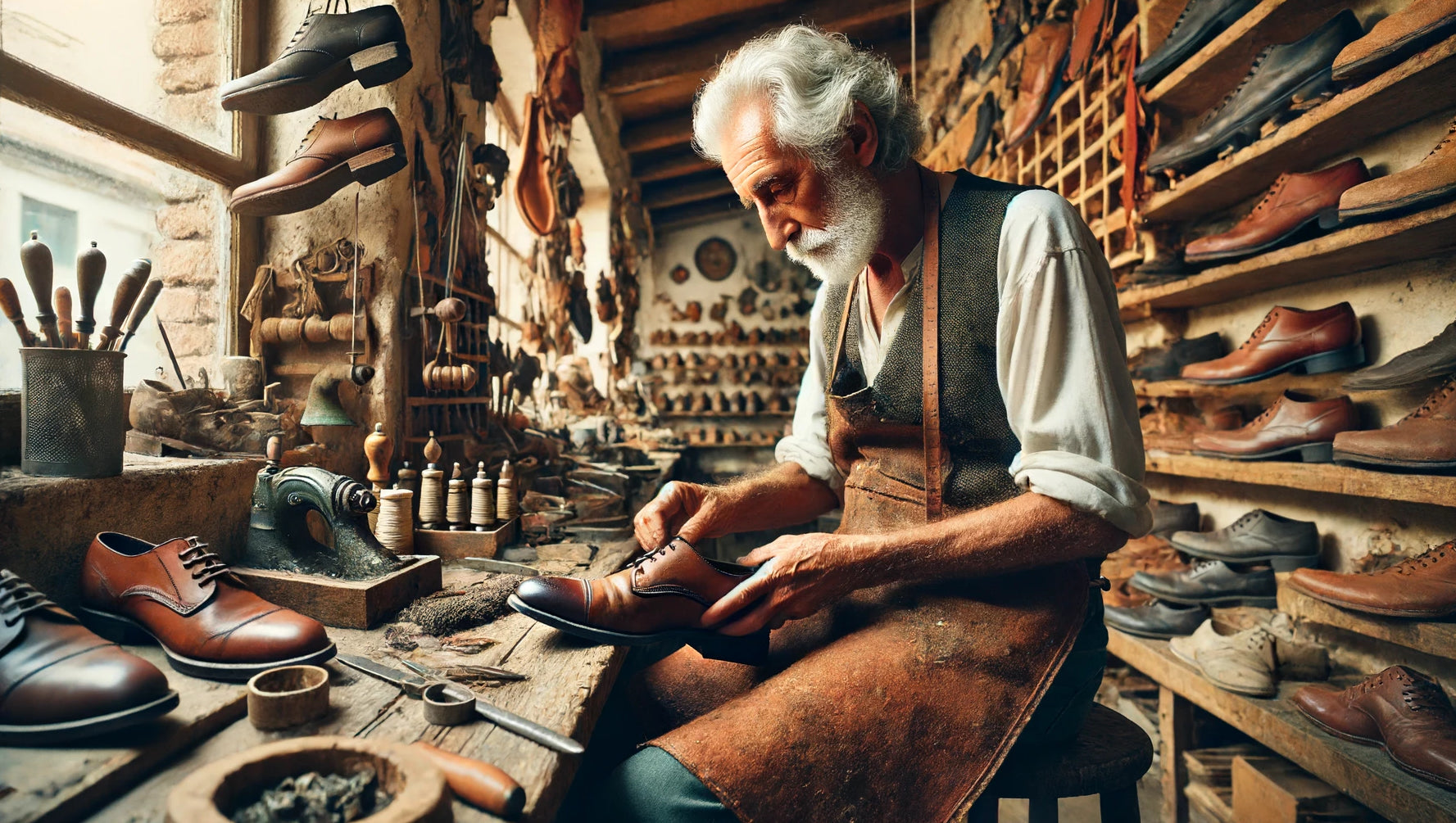
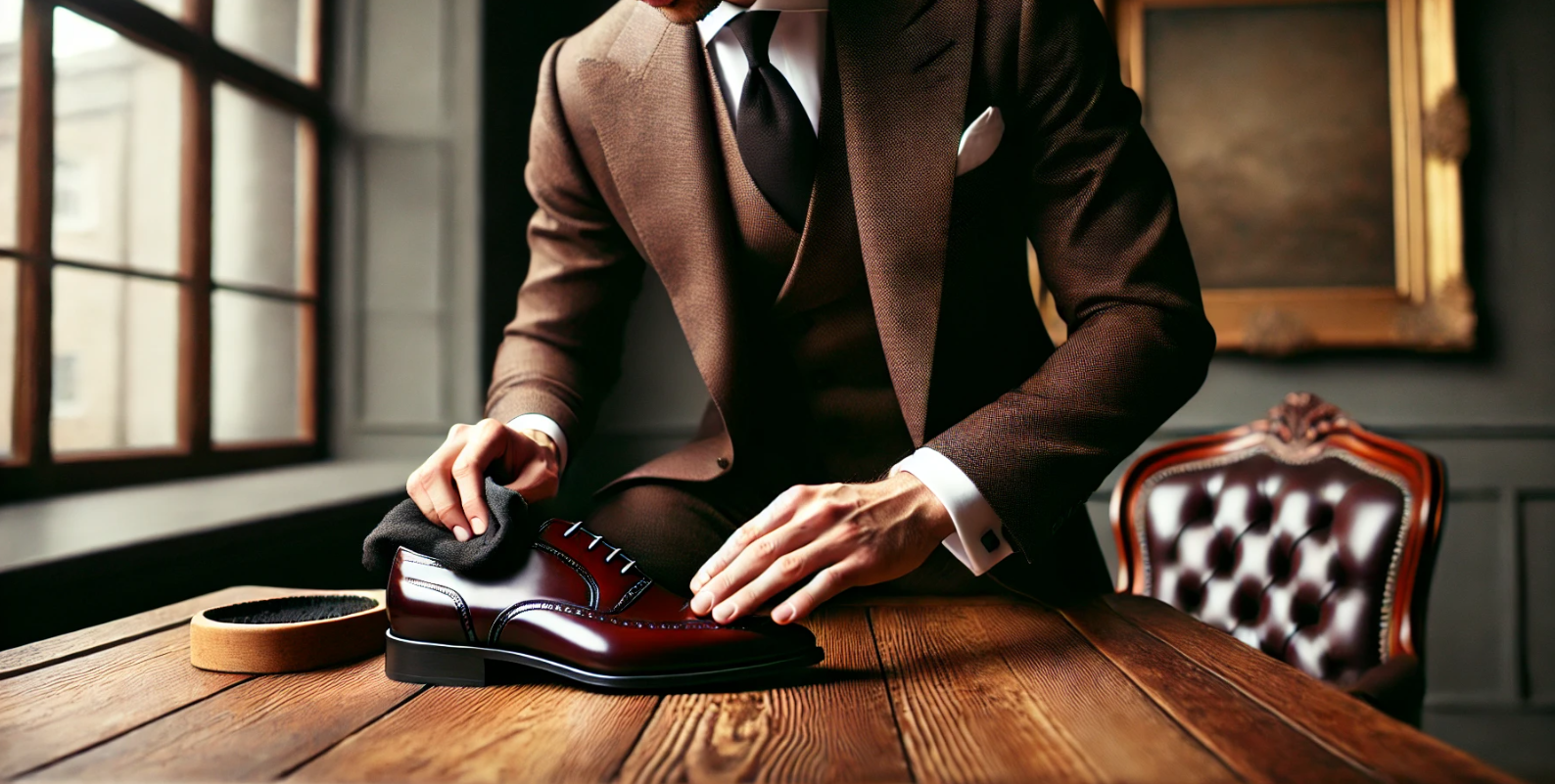
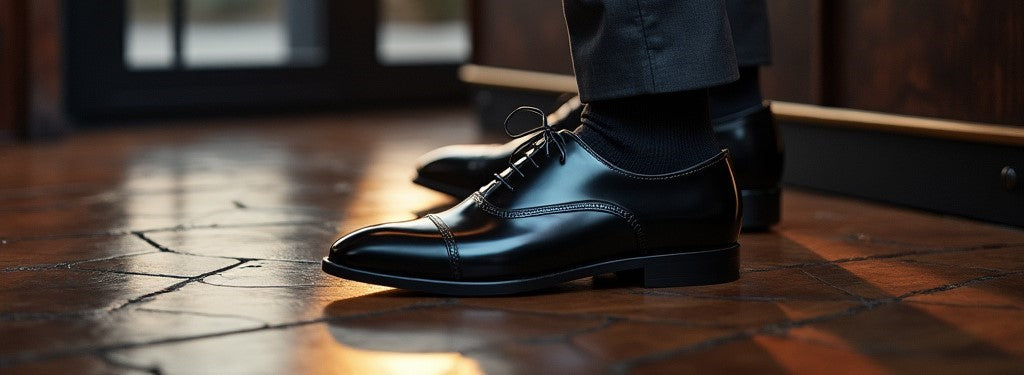
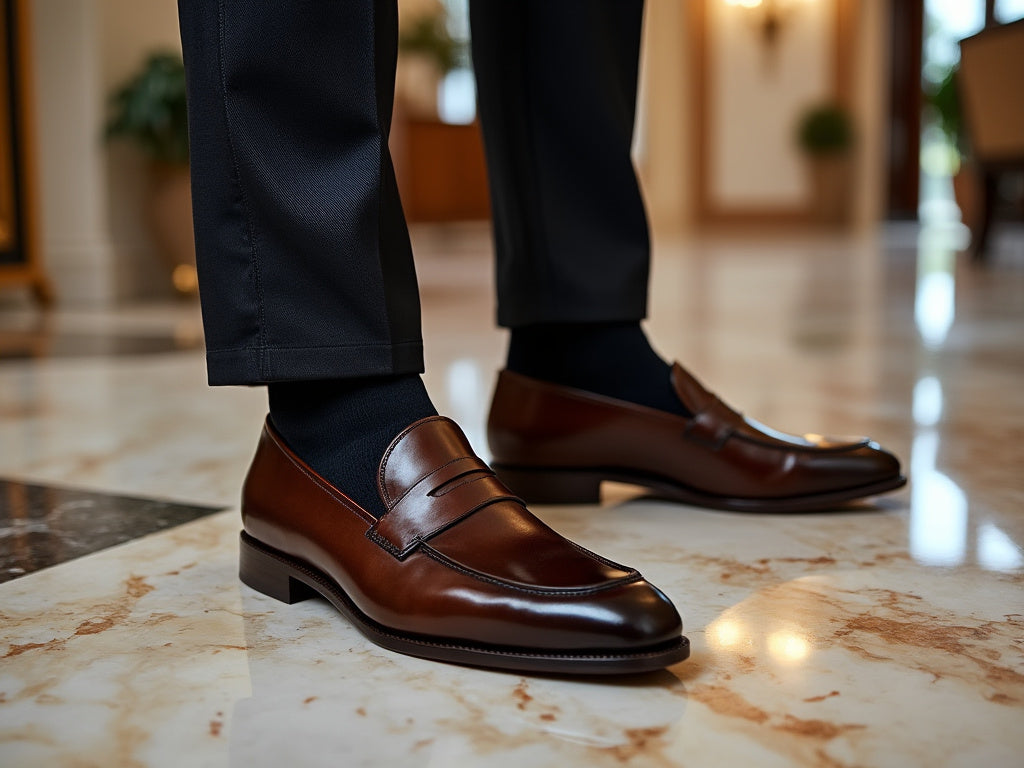
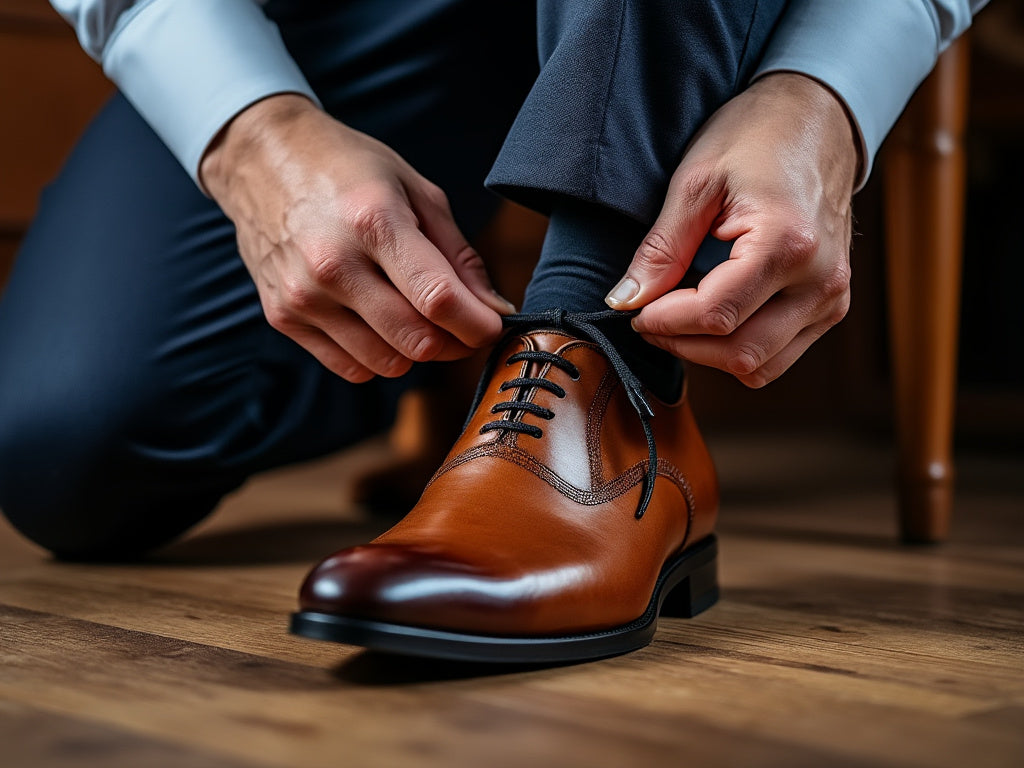
Leave a comment
This site is protected by hCaptcha and the hCaptcha Privacy Policy and Terms of Service apply.